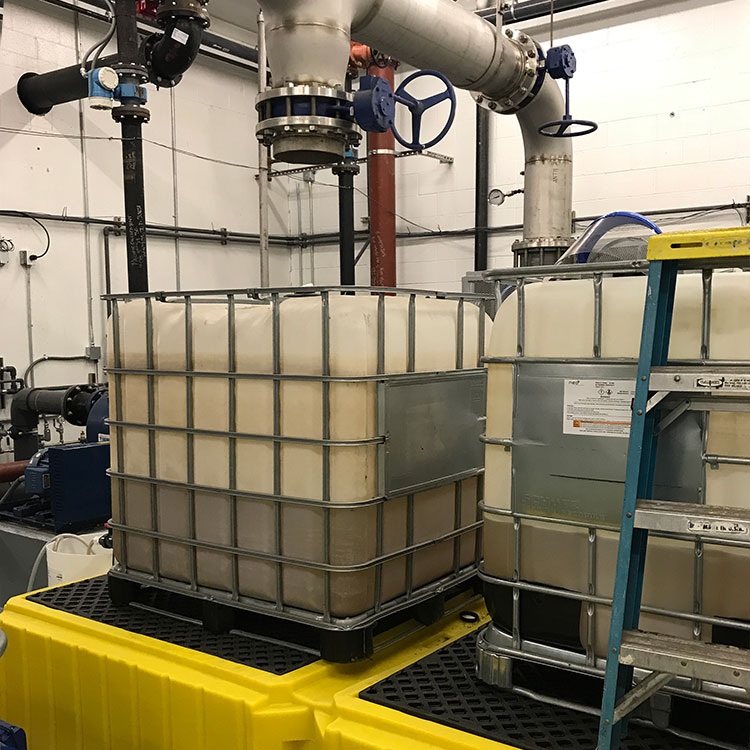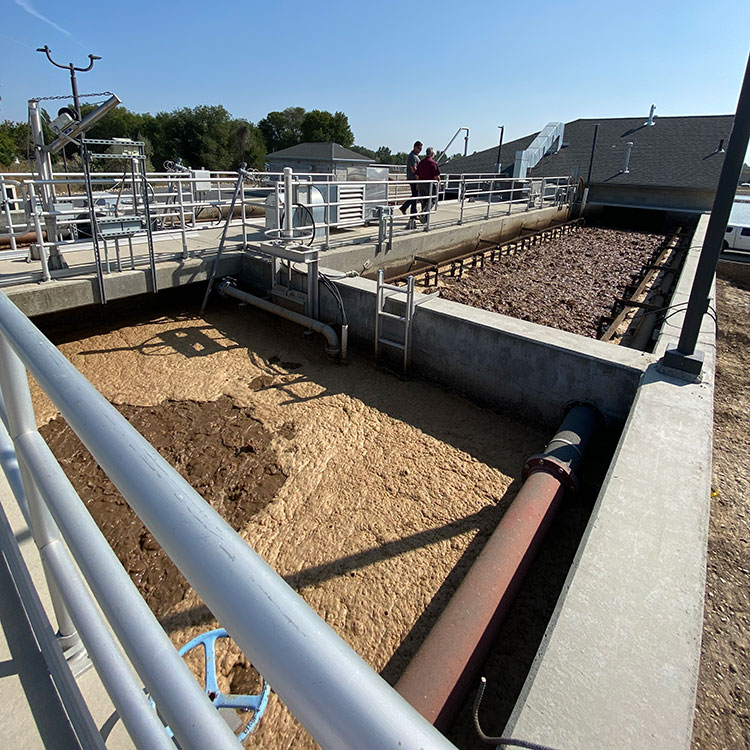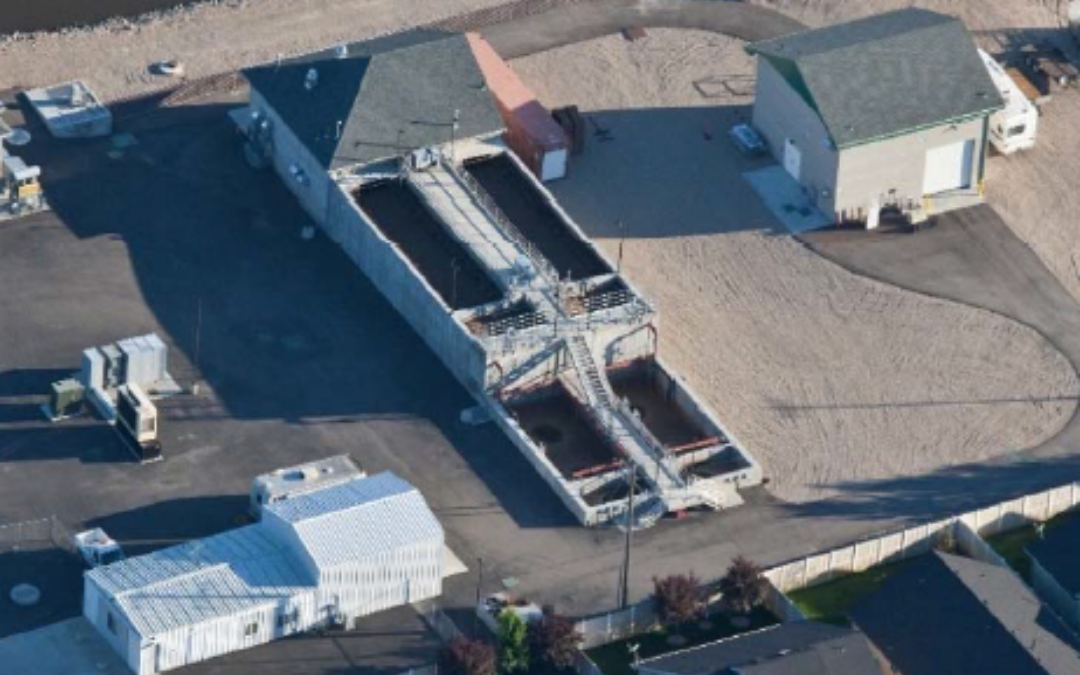With every permit renewal, discharge limits can be drastically reduced, usually with a compliance schedule that allows the wastewater facility to evaluate options and implement the best solution. That is the situation Star Sewer, a utility outside Boise, Idaho, found itself in with their 2015 NPDES renewal. The new permit reduced their phosphorus limit from 1.1 mg/L year-round to seasonal limits of 0.07 mg/L from May to September and 0.35 mg/L the rest of the year. They had until 2025 to determine how they were to meet these limits.
Phosphorus Removal from Wastewater more Efficient with Neo WaterFX 300, Formerly RE300 – Pilot Study Confirmed
Star Sewer set up a pilot study to evaluate four options. Two options involved chemical precipitation with alum or WaterFX 300 plus tertiary filters following their MBR. These options would involve a major capital expense. The other two options tried the Water FX or alum fed directly into the MBR.

Pilot testing can be done with portable totes, to prove the Neo advantage.
The pilot study demonstrated that phosphorus removal by chemical precipitation was able to achieve the required limits by adding the precipitating chemicals, either WaterFX or alum, directly into the MBR. Though these options required increased chemical feed rates, this was great news as it meant that expensive capital investment in tertiary filters would not be required.
Ease of Operation and Operational Costs Lower with WaterFX
While both chemicals achieved low phosphorus limits by direct feed into the MBR and without additional filtration, there were sharp differences in how well WaterFX and alum achieved these limits. These differences greatly impacted not only the ease of operations but operational costs.
Lower Chemical Feed Rates and Reduced Caustic for pH Control
WaterFX is more efficient than alum at binding phosphorus and removing it from the wastewater. This efficiency meant that the WaterFX feed during the pilot was less than ten percent of the dosage of alum required, 40 parts per million by volume (ppmv) WaterFX vs 430 ppmv for alum. This translates into significant cost savings in chemical precipitating agent alone. But the chemical cost savings did not stop there.
Because WaterFX is much less acidic than alum, and because Star Sewer used less than a tenth of the alum dosage by volume, WaterFX added 1000-2000 times LESS acidity to the wastewater. The high caustic dosage of 40 gallons per day required to maintain pH with alum treatment could be reduced to 5 gallons per day using WaterFX. Reduced caustic not only reduced the chemical costs further but contributed (along with non-toxic, less acidic WaterFX) to a safer plant environment.
Less Sludge and Easier Dewatering for Reduced Sludge Processing and Disposal Costs

Neo WaterFX produces much less sludge, for major cost savings in sludge processing and disposal.
Using less chemical precipitate with WaterFX drastically reduced the chemical sludge produced during phosphorus removal. In addition, WaterFX forms a denser sludge that does not bind water like alum sludge. Combined, these factors mean WaterFX forms much less sludge, and the sludge that is produced is easier to dewater, requiring less polymer for processing. All this translates into substantially reduced sludge processing and disposal costs.
Full-scale Testing Confirmed WaterFX Advantages plus Added a Couple More
The full-scale trial confirmed all the cost savings and operational advantages demonstrated in the pilot study. In fact, the full-scale trial, conducted over several months, showed that the dosage of WaterFX could be reduced even further to between 18 and 22 ppmv and consistently reduce the phosphorus level to below the 0.07 mg/L limit, adding to the chemical cost advantage.
Toxicity is always a concern, so the full-scale trial closely monitored toxicity, confirming that WaterFX was non-toxic.
The trial also evaluated the impact on the MBR membranes. Analyses of the MBR operations showed that WaterFX resulted in less fouling and lower transmembrane pressures prior to scheduled cleanings. These factors may further reduce chemical cleaning requirements vs. those required with alum use and may extend membrane life. These additional cost savings that were not included in the analysis.
From Efficiency to Costs to Safety to Operations, WaterFX was the Clear Leader
WaterFX clearly demonstrated its superiority for removing phosphorus from wastewater and has numerous other benefits that make for a more cost-effective, safer, and more efficient operation. Read the entire Star Sewer Case Study and see all the details. Then, if phosphorus removal is a concern at your WWTP, contact Neo Water Treatment to set up your own pilot study and see if WaterFX can improve your bottom line and so much more.
Phosphorus Removal From Wastewater
Learn more about Phosphorus Removal From Wastewater.



